Posts Tagged: Spanish lavender
UC Davis Arboretum Plant Sale: Think Pollinators!
Think bees. Think butterflies. Think plants that will attract them. The UC Davis Arboretum and Public Garden is hosting its first in a series of fall plant sales on Saturday, Oct. 7 at the Arboretum Teaching Nursery on Garrod Drive, UC Davis...
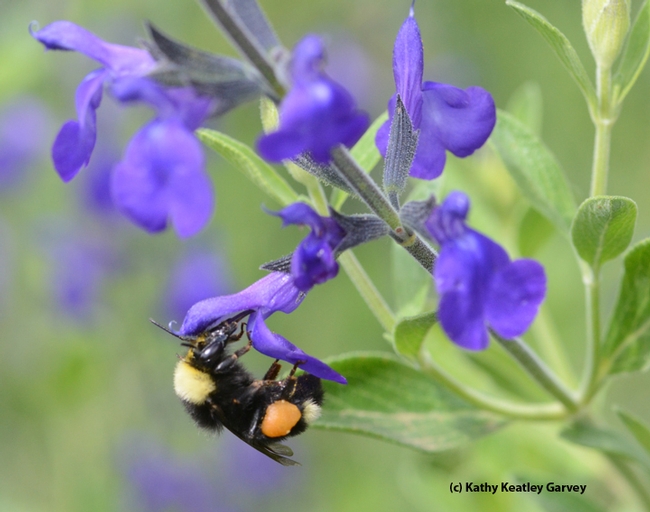
A black-faced bumble bee, Bombus californicus, forages on Purple Ginny salvia (sage). Sages are popular at the UC Davis Arboretum Plant Sales.(Photo by Kathy Keatley Garvey)
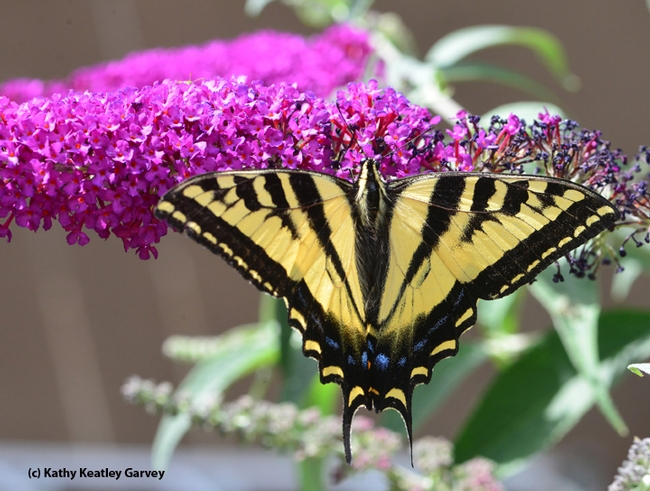
A Western tiger swallowtail, Papilio rutulus, sips nectars from a butterfly bush, Buddleia davidii. (Photo by Kathy Keatley Garvey)
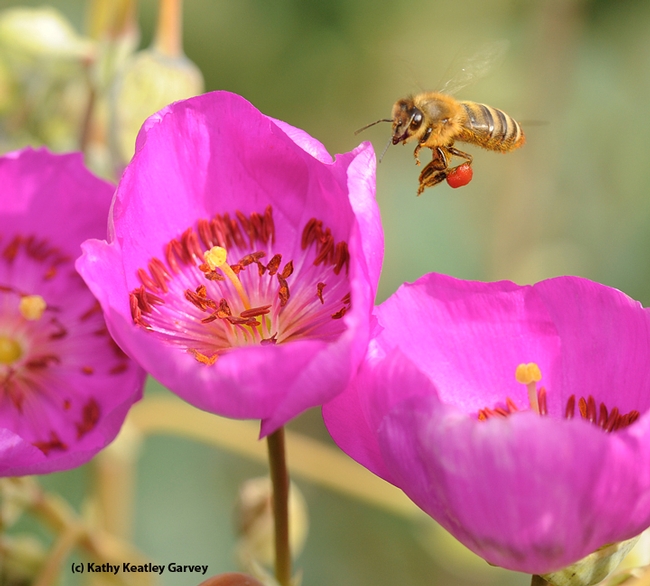
A pollen-packing honey bee heads for rock purslane, Calandrinia grandiflora. This is one of the plants available at the UC Davis Arboretum Plant Sale on Oct. 7. The plant yields red pollen. (Photo by Kathy Keatley Garvey)
Why Dead Bees Can Sting
Can dead bees sting? Yes, they can. Here's the scenario: Our pollinator garden is buzzing with the sights and sounds of honey bees. Ah, spring! A few feet away, California scrub jays are nesting in the cherry laurel hedges. They leave periodically...
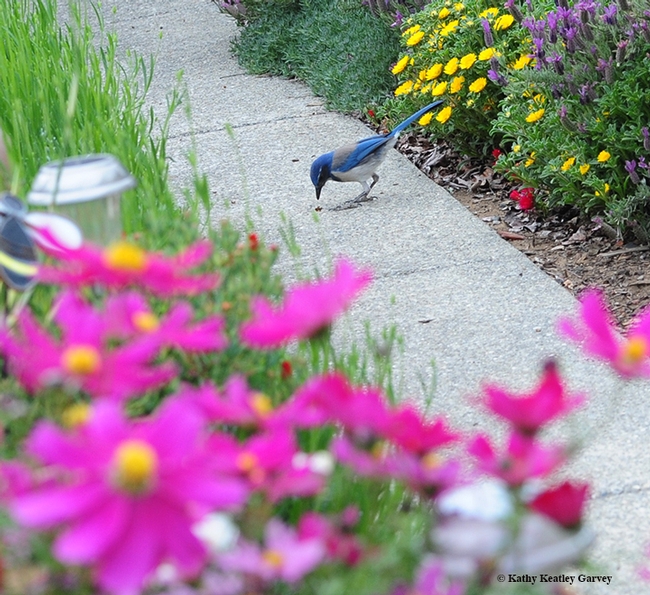
A California scrub jay nails a honey bee. (Photo by Kathy Keatley Garvey)
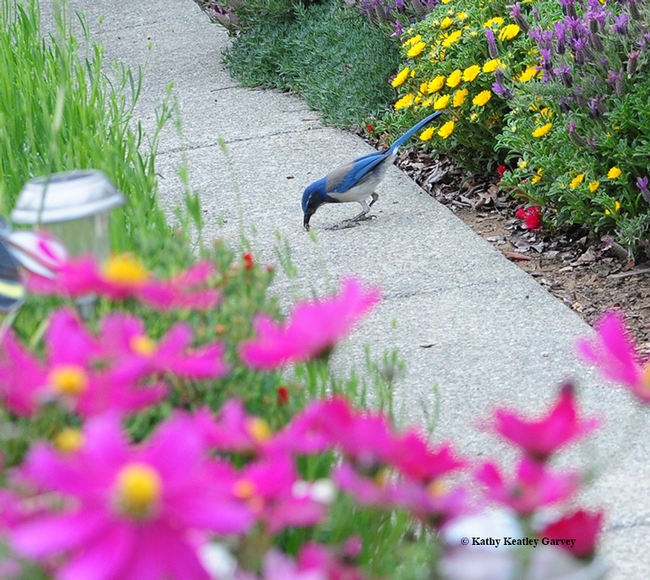
The California scrub jay decapitates the honey bee, avoiding the abdomen with the stinger. (Photo by Kathy Keatley Garvey)
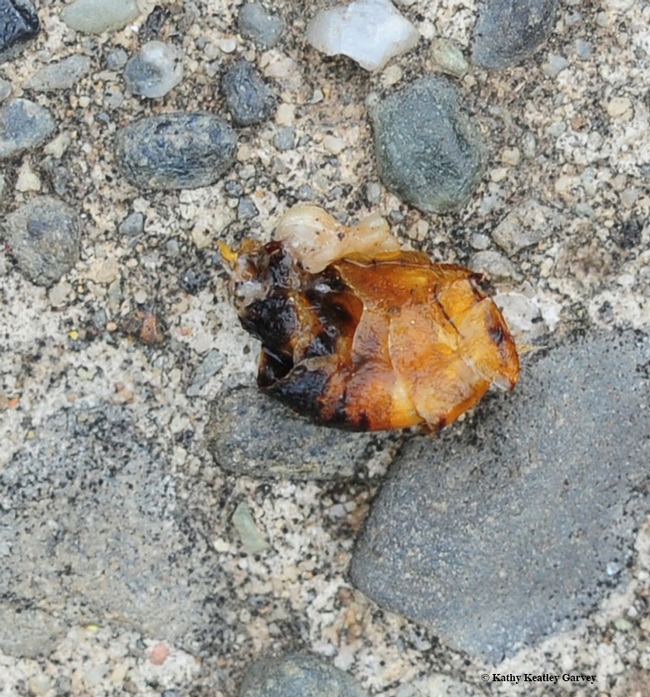
This is what was left of the honey bee from the photos above. (Photo by Kathy Keatley Garvey)

On UC Davis Picnic Day, scrub jays had a picnic of their own in the author's yard, decapitating honey bees, and leaving behind the abdomens. Note the stingers. (Photo by Kathy Keatley Garvey)
Ol' Blue Eyes: A Blue-Eyed Darner
Ol' Blue Eyes. What a treat to see. No, not an old movie starring Ol' Blue Eyes himself, Frank Sinatra (1915-1998), but the blue-eyed darner, the Rhionaeschna multicolor blue-eyed darner, Aeshna multicolor. Order: Odonata Suborder: Anisoptera...
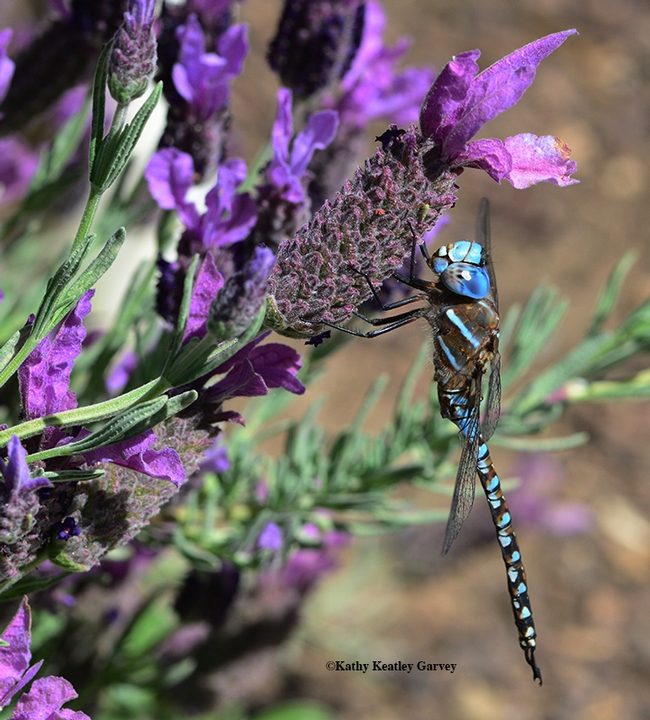
A Rhionaeschna multicolor blue-eyed darner, Aeshna multicolor, soaking up sun on a Spanish lavender in Vacaville, Calif. (Photo by Kathy Keatley Garvey)
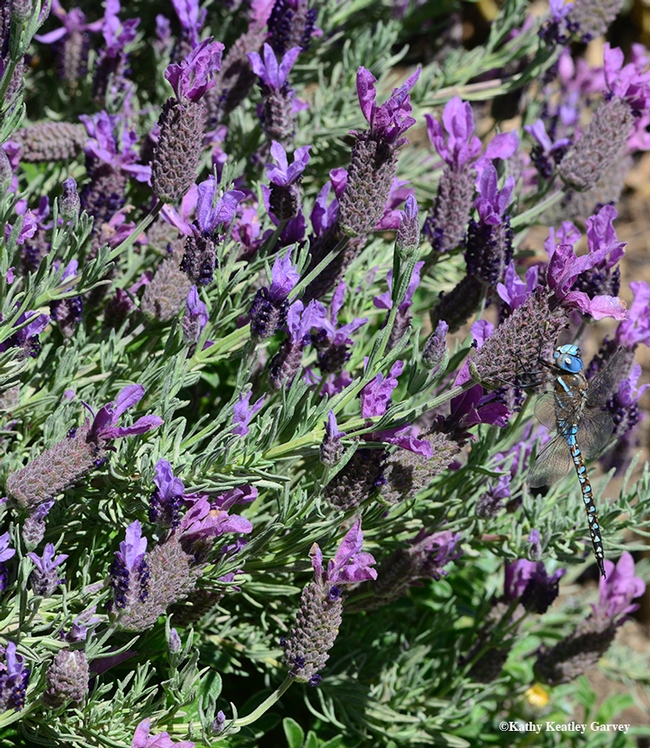
Find the blue-eyed darner in the Spanish lavender! (Photo by Kathy Keatley Garvey)
Not a Good Day for the Jumping Spider
Sometimes you get lucky. Sometimes you go hungry. Take the case of the huge jumping spider (a female Phidippus audax or bold jumping spider, as identified by Wade Spencer of the UC Davis Bohart Museum of Entomology) hanging out in our Spanish lavender....
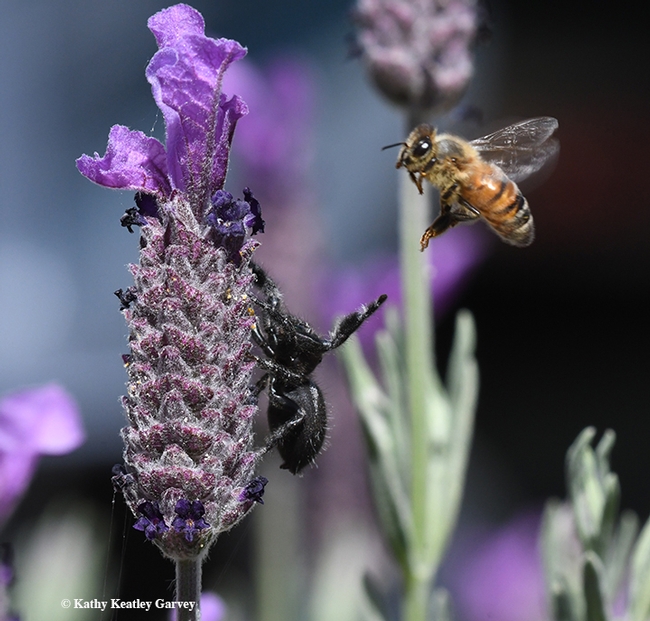
A honey bee narrowly avoids the outstretched jumping spider, a Phidippus audax. (Photo by Kathy Keatley Garvey)
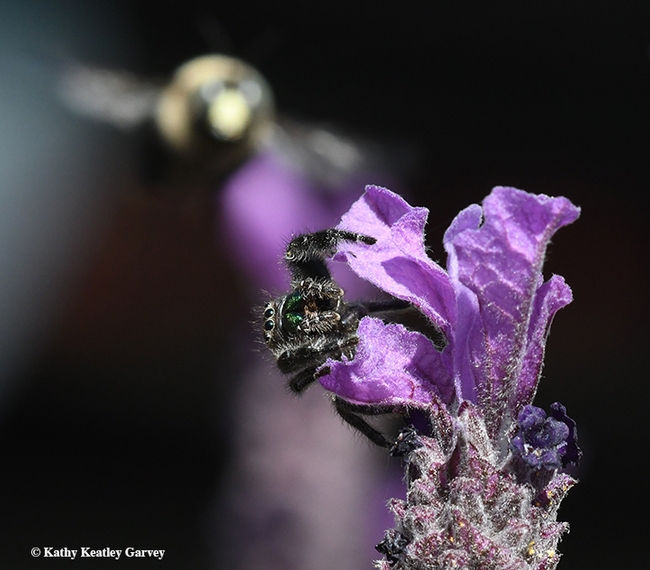
Oops, wrong direction! The jumping spider,Phidippus audax, is looking elsewhere as a bee arrives on the scene. (Photo by Kathy Keatley Garvey)
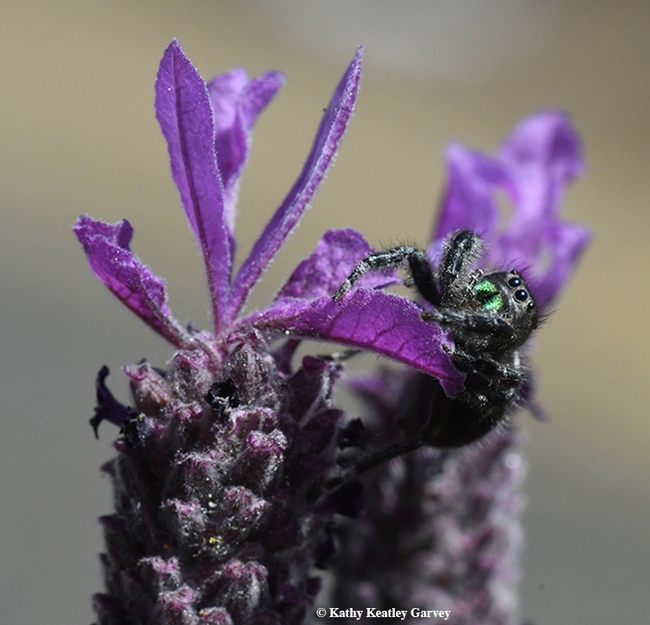
The jumping spider, Phidippus audax, climbs its mountain and lurks. (Photo by Kathy Keatley Garvey)
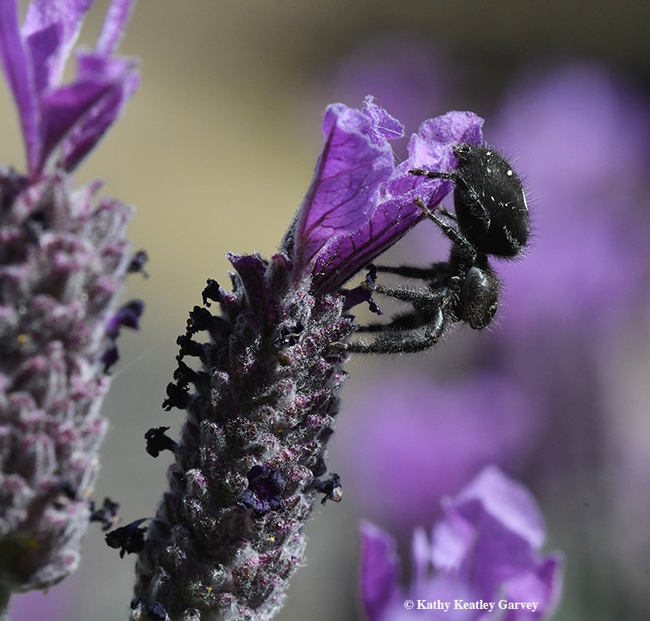
The jumping spider, Phidippus audax, exits its summit, the Spanish lavender. (Photo by Kathy Keatley Garvey)
Helicoptering in on the Spanish Lavender
If you like writing with light (photography), then you'll probably love capturing images of honey bees spinning like helicopters. In the late afternoon, when the light softens, head over to your favorite Spanish lavender patch. Pull up a chair, listen...
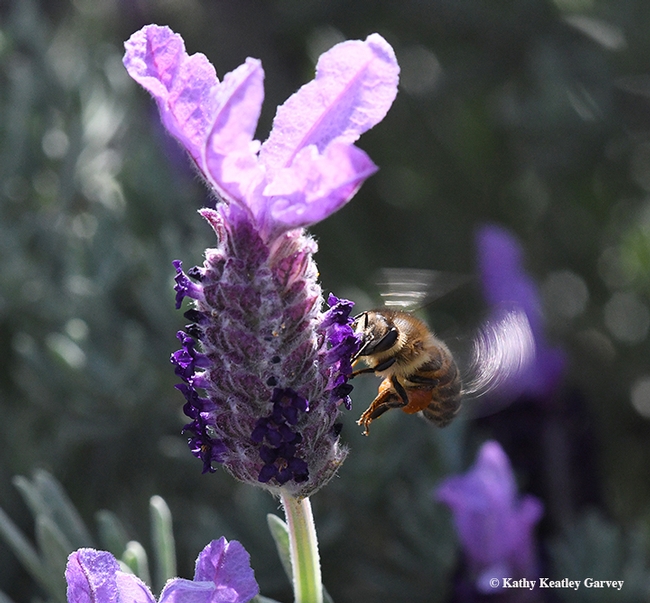
A honey bee nectaring on Spanish lavender. This was taken with a Nikon D500 and a 200mm macro lens. Settings: ISO 3200, f-stop 13, and shutter speed of 1/640 of a second. No flash. (Photo by Kathy Keatley Garvey)
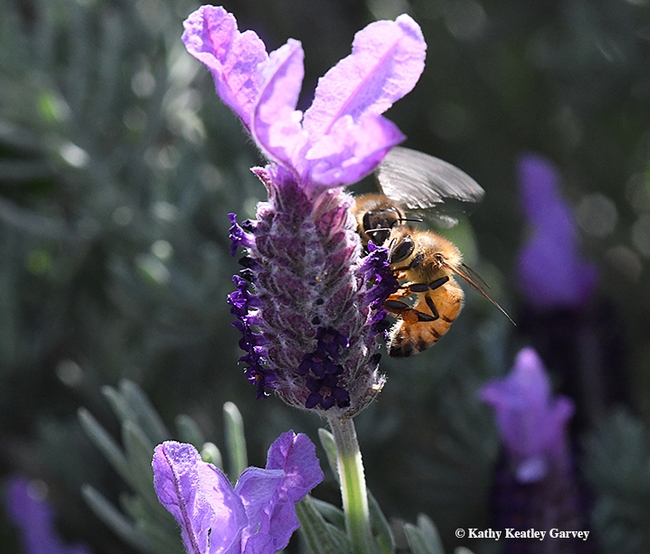
Spinning wings: Honey bees nectaring on Spanish lavender. This photo was taken with a Nikon D500, 200mm macro lens. Settings: ISO 3200; f-stop, 13; and shutter speed of 1/640 of a second. (Photo by Kathy Keatley Garvey)
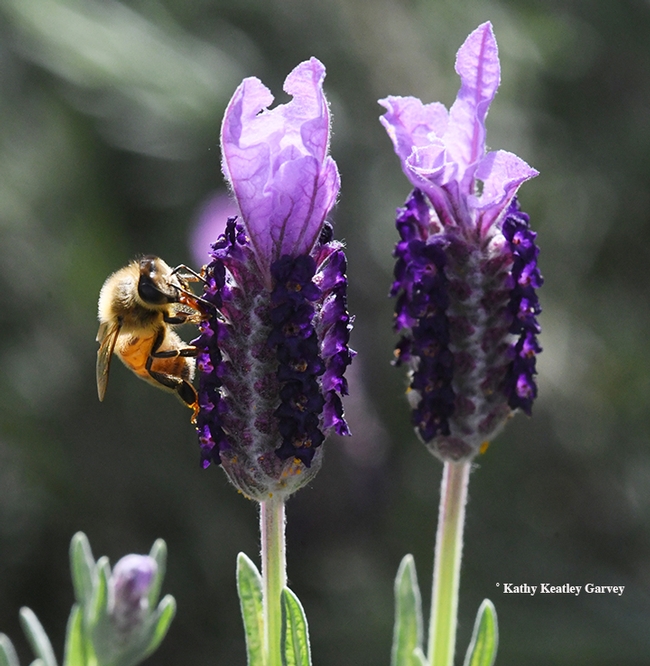
Check out the red tongue (proboscis) as the honey bee sips nectar from a Spanish lavender. (Photo by Kathy Keatley Garvey)
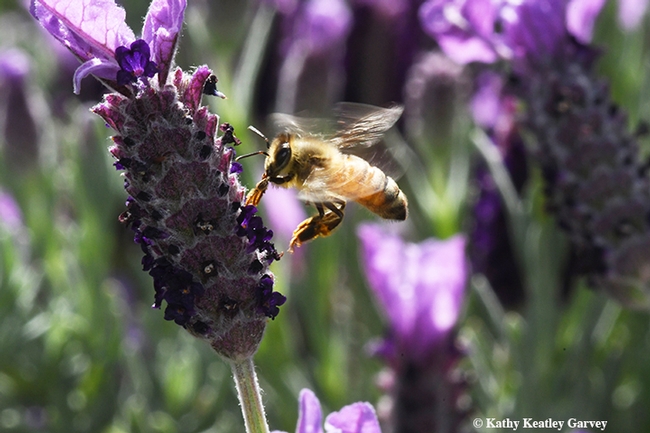
Honey bee cleaning her tongue, just before heading for more nectar from the Spanish lavender. (Photo by Kathy Keatley Garvey)

